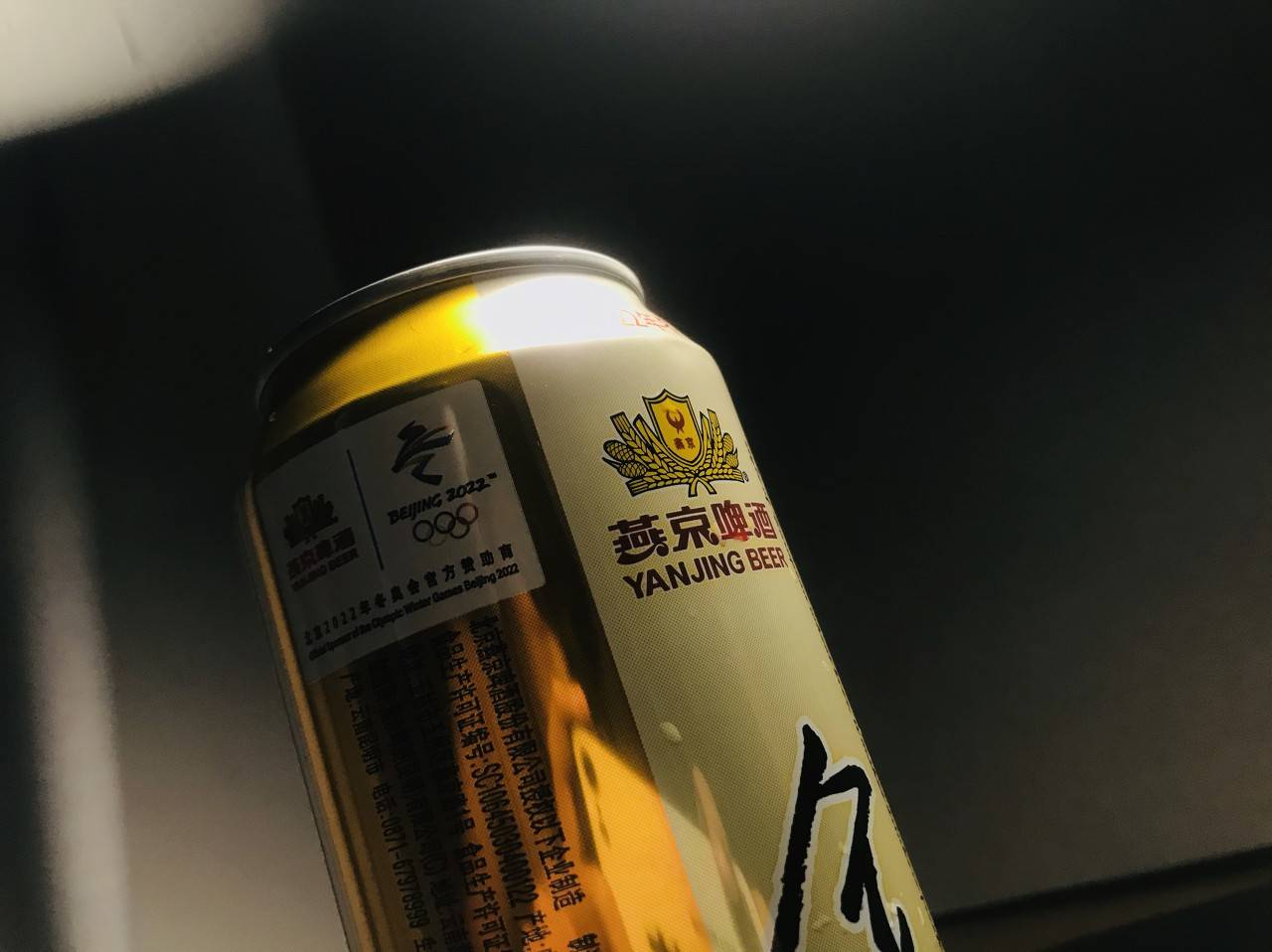Zebra Consumption Yang Wei
The overall recovery of the beer industry is obvious. The Yanjing department, which has two listed companies, has fallen further and further behind.
Huiquan Beer, which disclosed its performance on April 22, had a substantial increase, but its non-net profit was only 10 million yuan. The operating income of the parent company Yanjing Beer exceeded 10 billion last year, and the net profit attributable to the parent was only 197 million yuan. In terms of profitability, the Yanjing Department is undoubtedly at the bottom of the major breweries.
Behind the lack of profitability is their passiveness in this round of industry reform with the theme of high-end and de-capacity.
In addition to the three giants of China Resources Beer, Budweiser, and Tsingtao Brewery, local brands such as Chongqing Beer and Zhujiang Beer have risen strongly with the help of the close relationship with the giants. The Matthew effect in the industry is gradually strengthening. Once the top five structure is rewritten, how will the Yanjing Department Place?
In Q1 of 2021, the overall performance of the industry is improving. Yanjing Beer has suddenly lost 120 million to 100 million yuan against the trend. What happened?

Huiquan Beer’s high-end weakness
On April 22, Huiquan Beer (600573.SH) disclosed its 2020 annual report, further clarifying the industry’s recovery trend in recent years.
Last year, under the impact of the epidemic, the company still achieved substantial growth. Operating income was 614 million yuan, a year-on-year increase of 9.07%. Net profit attributable to the parent was 28.6708 million yuan, a year-on-year increase of 44.66%. Non-net profit increased by 162.56% year-on-year to 1246.38. Ten thousand yuan.
The rate of increase is astonishing, and the deduction of non-net interest rate is only 2.03%. People can’t help asking, how bad was the company’s performance in the past few years?
Huiquan Beer originated in Huiquan County, Quanzhou City, Fujian Province, and landed on the Shanghai Stock Exchange in 2003. However, it encountered performance Waterloo that year, and performance plummeted by 83.44%.
The following year, Yanjing Beer (000729.SZ) took over, replacing Hui’an State-owned Assets as the controlling shareholder. Qixinbao shows that as of now, Yanjing Beer holds 50.08% of the company’s shares.
In the golden age of China’s beer industry, the company’s performance continued to rebound, setting the best performance record in 2009, with operating income and net profit attributable to parent companies of 1.095 billion yuan and 76,848,100 yuan respectively.
Since then, the company has stumbled all the way, sometimes with performance declines and even losses. In the last round of beer industry adjustments, the company’s non-net profits from 2016 to 2018 were -10.69 million yuan, -46,292,300 yuan, and -567,000 yuan, respectively.
At the bottom of the valley, the beer industry fought a battle for the revival of capacity reduction and high-end, and Huiquan Beer also followed up with business upgrades to promote performance.
In 2020, the company’s annual sales of high-end products in small bottles increased by 8% year-on-year, and sales of can products increased by 16% year-on-year.
However, from an overall point of view, the main growth force of the company is still ordinary beer. Last year, the operating income of this sector increased by 9.71% year-on-year, which was higher than the 7.50% of mid-to-high-end beer.
The gross profit margin of ordinary beer dropped by 3.63 percentage points to 7.29%, triggering a year-on-year decrease of 1.07 percentage points in the overall gross profit margin of the company’s beer business.
Yanjing rides the roller coaster
The hip pull of Huiquan Beer is the same as its elder brother Yanjing Beer.
Before Budweiser entered the Chinese market and China Resources Beer became the leader of Chinese beer through industry integration, Yanjing Beer had always been the second largest in the industry after Tsingtao Brewery (600600.SH).
However, in the great integration of national beer resources that was in full swing that year, Yanjing did little and watched China Resources, Budweiser, Carlsberg, including Tsingtao Brewery, and other competitors conquer the city.
Although the company has won Huiquan Beer and has two A-share listed beer companies, it has become one of the top five Chinese beer companies, but its strength still has a considerable gap with the three giants of China Resources Beer, Budweiser Asia Pacific and Tsingtao Brewery.
In recent years, the company has deployed its mid-to-high-end market through products such as Yanjing White Beer, Yanjing U8, Yanjing Bajing Cultural and Creative, Yanjing Daily Fresh, Liquan 1998 and other products, which has indeed led to a rebound in performance.
Especially in Q3 of 2020, the company’s operating income and net profit attributable to the parent increased by 10.02% and 67.28% year-on-year respectively, setting a record of quarterly performance growth for many years, which is impressive.
Chongyang Investment, which has always been known for its “reverse investment based on in-depth value research”, raised the brand of Yanjing Beer in 2018, which puzzled the market. The headline of the media report at that time was “Chongyang Investment’s Yanjing Beer lagging behind.” After the results of the first three quarters of 2020 were disclosed, the market seemed to see the light.
However, for the whole year of 2020, the company’s overall performance is still hard to say. Operating income was 10.928 billion yuan, down 4.71% year-on-year, and net profit attributable to the parent was 197 million yuan, down 14.32% year-on-year.
Subsequently, Yanjing Beer recently disclosed a performance forecast for the first quarter of 2021. The company achieved beer sales of 824,300 kiloliters, an increase of 36.61% year-on-year, and an estimated operating income of 2.720 billion yuan to 2.820 billion yuan and a loss of 120 million to 100 million yuan.
The first quarter is not the peak beer season, but apart from the impact of the epidemic last year, the company rarely loses money in that season. After combing Zebra’s consumption, it found that from 2017 to 2019, the company’s Q1 was profitable.
A company in the same industry, Tsingtao Brewery’s net profit attributable to its parent in the first quarter of this year was 1.022 billion yuan, a year-on-year increase of 90.26%, a record high, and Lanzhou Huanghe also achieved normal profits. What exactly has Yanjing Beer experienced?
Will there be a chance?
Although following the industry from the bottom of the valley, for Yanjing Beer and Huiquan Beer, market opportunities have become less and less.
In 2020, the cumulative output of Chinese beer enterprises above designated size was 34,111,100 kiloliters, a year-on-year decrease of 7.04%, continuing the downward trend in beer production in recent years.
The decline in beer consumption and the high-end industry complement each other, and no normal company will let go of such an opportunity.
In the face of the three mountains that dominate in all respects, especially in recent years, what better way can the Yenching Department do?
In addition to the Big Three, Carlsberg put most of its beer assets in China into Chongqing Beer. Lanzhou Yellow River’s beer assets were originally a joint venture with Carlsberg. *ST Xifa’s core asset, Lhasa Beer, is also a listed company and Carlsberg’s five-fifth shareholding. , Zhujiang Beer’s second shareholder is Budweiser, and Heineken sells its Chinese business to China Resources Beer… The big factories have joined forces and formed alliances, aiming for high-end.
In contrast, Yanjing Beer and Huiquan Beer form a weak alliance. What is the effect?
Insufficient high-end, resulting in profitability far less than competitors.
In 2020, Huiquan Beer’s gross profit margin was 25.03%, which was almost the lowest among listed peers; during the same period, the gross profit margins of China Resources Beer, Tsingtao Beer, and Zhujiang Beer were 38.40%, 40.61%, and 49.19%, respectively.
Last year, the net profit margins of China Resources Beer, Tsingtao Beer, Chongqing Beer, and Zhujiang Beer were 6.66%, 7.93%, 9.84%, and 13.39%, respectively, while Yanjing Beer and Huiquan Beer were 1.80% and 4.67%.
In this round of recovery in the beer industry, in addition to high-end, reducing production capacity is also another invisible theme. The most aggressive performer is China Resources Beer, which has shut down its breweries for several consecutive years. Although profits have been eroded in the short term, it has been able to play lightly in the long run.
Chongqing Beer was also under the baton of Carlsberg, slashing towards low-end brands and production capacity, which once caused a fire in the backyard.
In recent years, the Yenching Department has also performed some actions, but judging from the current results, it is obviously not enough.
Take Huiquan Beer, which disclosed its production capacity, as an example. The company’s designed annual production capacity is 800,000 tons, but the actual output is 550,000 tons, while last year’s output was only 226,700 tons.





























































You must log in to post a comment.